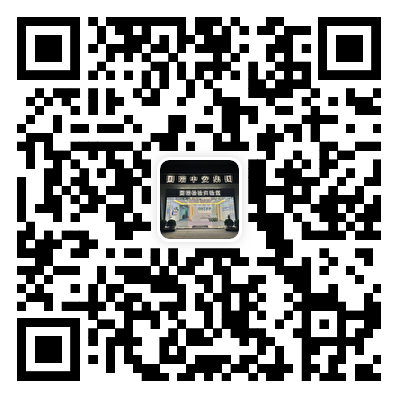The National Medical Products Administration (NMPA) in China is the regulatory body responsible for the oversight and approval of medical devices. Obtaining NMPA certification for a medical device is a multi-step process that requires compliance with specific regulations. Below is a detailed guide to help you understand the process for applying for an NMPA certificate for medical devices.
1. Determine Device Classification
First, determine your device's classification according to the NMPA’s regulations. Medical devices in China are classified into three categories:
- Class I: Low risk, no special control required.
- Class II: Moderate risk, requires special control.
- Class III: High risk, requires the most rigorous regulatory controls and clinical trials.
The classification is crucial as it affects the complexity and time required for the approval process.
2. Ensure Compliance with Chinese Standards
Your device must meet the relevant Chinese national standards (GB standards). Depending on the device's category, compliance with standards such as GB 9706 (general requirements for medical electrical equipment), GB 18268 (safety requirements for electro-medical equipment), and others may be required. International standards like ISO 13485 and IEC 60601 may also be applicable.
3. Prepare the Required Documentation
The NMPA application requires comprehensive documentation to demonstrate that your device meets safety, performance, and quality standards. These typically include:
- Product Technical Documentation (PTD): This includes product specifications, intended use, materials used, manufacturing process, etc.
- Quality Management System (QMS) Certification: This typically involves ISO 13485:2016 certification or another internationally recognized QMS.
- Preclinical Data: This includes safety and efficacy data from laboratory testing (if required).
- Clinical Trial Data: For Class II and III devices, clinical trial data may be required to demonstrate the device’s safety and performance.
- Clinical Evaluation Report: A summary of the available clinical data that supports the device’s intended use.
- Labeling and Instructions for Use (IFU): This should comply with Chinese regulations for medical devices.
- Manufacturing Information: Information about the manufacturing site and process, which is crucial for inspection purposes.
- FDA/CE or Other Approvals: If applicable, providing documentation of regulatory approvals from other markets (e.g., FDA, CE) can support your application.
Translation Requirements: All documents must be translated into Chinese by a certified translator.
4. Select a Local Chinese Representative
Foreign manufacturers must designate a local authorized representative in China (often called a Chinese Responsible Person). This representative is responsible for communicating with the NMPA and ensuring the device meets Chinese regulations. The representative must be registered with the NMPA.
5. NMPA Registration Application Process
After gathering all required documentation, the registration process involves the following steps:
- Online Registration: Submit your application through the NMPA’s online registration system. You will need to create an account and follow the instructions to submit your device's registration.
- Submission of Technical Documentation: Submit the PTD, clinical trial reports (if necessary), and other required documentation through the online portal. Make sure that your documentation complies with all NMPA regulations and standards.
- NMPA Review: The NMPA will review the submitted documents. This may involve:
- Technical Review: A review of the device’s technical specifications and clinical data.
- Inspection: An inspection of the manufacturing facility may be required for Class II and III devices.
- Clinical Trial Review: For Class III devices, clinical trial data will be evaluated, which may require in-country clinical trials.
- Application Fees: Depending on the device classification, there are fees associated with the registration process.
6. Clinical Trials (if applicable)
For Class II and Class III devices, clinical trials conducted in China may be required. The clinical trials must follow NMPA guidelines, and the data must be submitted as part of the application.
- Clinical trials must be conducted in China or be recognized by the NMPA.
- A Clinical Trial Authorization (CTA) must be obtained before starting the clinical trials.
- The NMPA typically reviews the clinical trial protocol before granting approval.
7. NMPA Review Period
The NMPA typically takes 6-12 months for Class II devices and 12-24 months for Class III devices to process the application and make a decision. The review timeline can be affected by the complexity of the device, the completeness of the documentation, and the need for clinical trials.
8. Obtain NMPA Certificate
Once the review process is complete and the device is deemed safe and effective, the NMPA will issue a medical device registration certificate (often referred to as a NMPA certificate). This certificate allows you to legally market and sell the device in China.
9. Post-Market Surveillance and Reporting
After receiving NMPA certification, there are ongoing obligations that include:
- Post-market surveillance to monitor the device’s performance and safety in the market.
- Adverse event reporting to the NMPA if any issues arise with the device.
- Renewal of registration every 5 years.
10. Importation and Distribution
After receiving the NMPA certificate, you must also ensure that your device complies with Chinese import and distribution regulations. This involves ensuring your Chinese distributor follows the correct importation procedures and that the device complies with Chinese customs regulations.
Summary Timeline and Costs
- Pre-Application Preparation (2-4 months): Time for document preparation, QMS certification, and translation.
- Application Submission and Review (6-24 months): Depending on classification, document review, and inspections.
- Post-Market Obligations: Surveillance and reporting after the product is on the market.
Costs
Costs can vary depending on the classification of the device and the complexity of the application. The fees typically include:
- Registration Fees: These vary depending on the device’s classification and complexity.
- Clinical Trial Fees: If required, clinical trials in China can be expensive.
- Inspection Fees: If the NMPA requires a factory inspection, this can also incur costs.
Conclusion
Obtaining NMPA certification for a medical device is a rigorous process that requires careful preparation and compliance with Chinese regulations. Ensuring your device meets the necessary standards, submitting the correct documentation, and being prepared for potential clinical trials and inspections will be key to a successful registration process.

.png)

